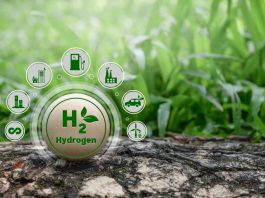As the world pushes towards a carbon-neutral future, hydrogen has emerged as a crucial component of the global energy transition.
Clean hydrogen can replace fossil fuels in various industries, reducing greenhouse gas emissions and promoting sustainability.
It powers fuel cells, provides energy storage solutions, and is a key ingredient in decarbonising heavy industries such as steel and cement production.
Moreover, hydrogen has significant potential in transportation, enabling zero-emission fuel for vehicles, ships, and even aeroplanes.
One of the main challenges in hydrogen production is ensuring the process is efficient, cost-effective, and environmentally friendly.
Electrochemical water-splitting is a promising method that generates clean hydrogen fuel by splitting water molecules using electricity. However, this process requires highly efficient catalysts to enhance performance and stability.
Recent research conducted at Tohoku University has developed an advanced catalyst that could revolutionise hydrogen production.
Breakthrough in catalyst design
Researchers at Tohoku University have successfully developed a highly stable and efficient catalyst that improves the electrochemical water-splitting process.
This breakthrough revolves around understanding and controlling the ‘reconstruction’ of precatalysts – chemical transformations that occur during catalysis, which can either enhance or reduce their effectiveness.
During the study, a Co2Mo3O8 precatalyst was subjected to potential-dependent reconstruction, resulting in the formation of an electrochemically stable Co(OH)2@Co2Mo3O8 catalyst.
The researchers discovered that the surface structure transformation of the precatalyst could be controlled through applied electrical potentials. Additionally, the process led to the etching of inherent species from the precatalyst into the electrolyte, further optimising the catalytic system.
Increased hydrogen production efficiency and stability
The newly developed catalyst demonstrated remarkable performance in hydrogen production. It achieved an impressive Faradaic efficiency of 99.9% versus a reversible hydrogen electrode (RHE), indicating a near-complete conversion of electrical energy into hydrogen fuel.
Furthermore, the catalyst remained stable for over a month, making it suitable for long-term industrial applications.
This discovery represents a major step forward in catalyst design, offering a practical solution to the efficiency and durability challenges faced by current hydrogen production technologies.
By improving catalyst longevity and performance, researchers are paving the way for large-scale hydrogen fuel generation, bringing us closer to a cleaner energy future.
Heng Liu of Tohoku University added: “It’s hard to design a catalyst that works well when that catalyst itself can change. It’s almost like trying to play tennis with a ball that morphs each time you hit it.
“Therefore, there are a lot of challenges to develop a rational and commonly applicable methodology for synthesising high-performance catalysts.
“In summary, the resulting catalyst was highly efficient and able to stay in storage for extended periods of time. Our study highlights its suitability for industrial applications.”
Implications for clean energy
The findings from this study contribute to the broader goal of enhancing sustainable hydrogen production, which is essential for combating climate change and reducing reliance on fossil fuels.
By refining the reconstruction process of precatalysts and understanding how electrolyte evolution impacts catalytic performance, scientists can develop more effective methodologies for synthesising high-performance catalysts.
As clean hydrogen gains traction as a viable energy source, innovations like this will be instrumental in achieving carbon neutrality by the 2050s.
The ability to produce hydrogen efficiently will accelerate the adoption of hydrogen-powered technologies across multiple sectors, from renewable energy storage to transportation and industrial manufacturing.
The breakthrough in catalyst design at Tohoku University marks a significant advancement in hydrogen production technology.
With enhanced efficiency, stability, and industrial viability, this research brings us closer to a future powered by clean hydrogen.
As nations and industries ramp up their commitments to sustainability, innovations like these will play a critical role in shaping a greener, more sustainable energy landscape.









